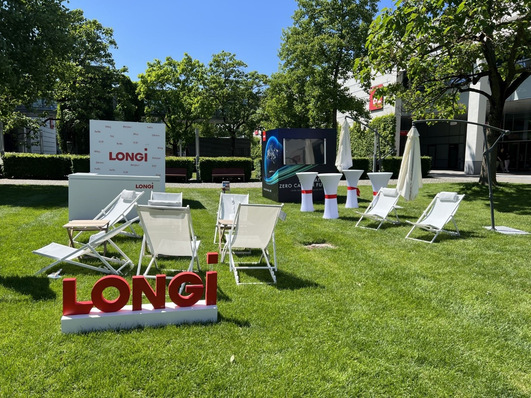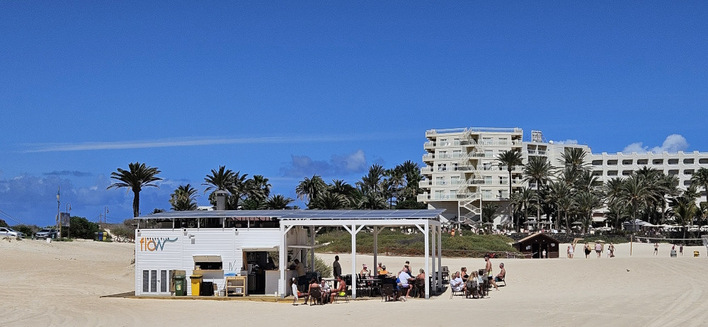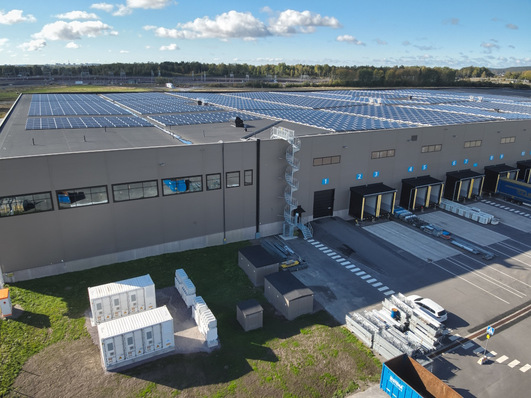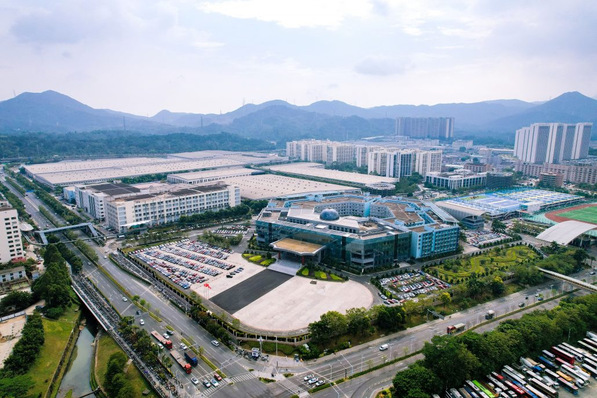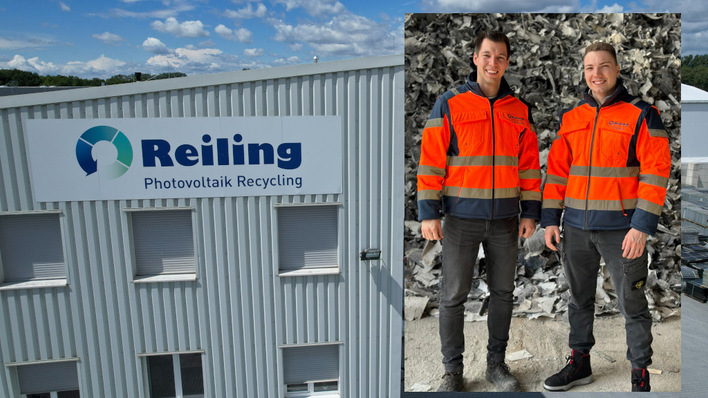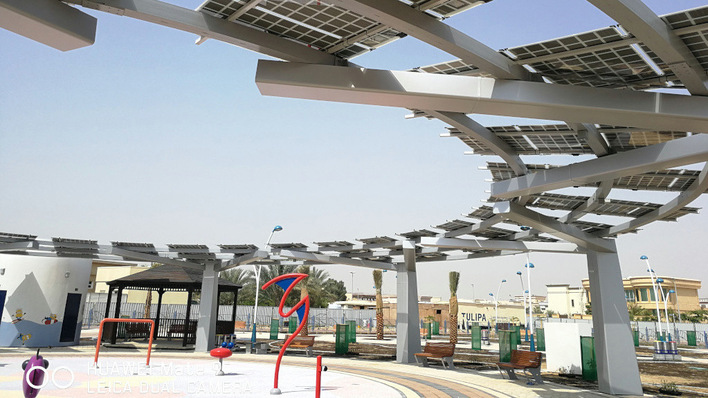How do you assess the prospects for this year?
Florian Roos: We successfully completed the restructuring in the summer of 2018 and are now taking the next step in the company's development. Above all, this means that we will continue to expand our international markets. Here we are currently focusing on South Korea, India and South America. For example, we have recently set up a sales team in Colombia. Germany is a strong market in Europe. Overseas we are also in close proximity to our customers with sales companies and production sites.
Which markets are the most important for you?
Florian Roos: With our ground-mounted systems, we are particularly well represented in Asia and the Pacific, i.e. in the Apac region. Japan and South Korea are the most important markets there. But demand is also high in America and Africa. I see the US and Australia as the most important markets for our tracking system. North Africa and the Middle East will be added in the future.
And what about the roof-top segment?
Florian Roos: Here it's mainly the European countries. North America is also an important market, where large industrial roofs are mainly covered with solar systems. We are increasingly approaching the roof market in Asia with new systems. In Australia, demand from wholesalers for private roof systems is also rising.
Schletter is the only foreign manufacturer to operate a branch in China. Have you managed to get a foothold there? Is this a relevant market for you?
Florian Roos: China is not our main sales market in Asia and the Pacific region. Countries such as Japan, Vietnam and the Philippines play a greater role there. Nevertheless, we are one of the four major suppliers in the Chinese market and were able to maintain or even expand our position, despite the market slump last year. Our plant in China has a capacity of 1.3 gigawatts per year, which we are expanding further to meet rising demand in China and the APAC region.
In China, open space solar parks dominate. Is the roof segment important there?
Florian Roos: We are quite successful in China with our roof systems. But we only build on industrial roofs there.
Is there no market for private roof systems?
Florian Roos: The market does exist, but there are risks for manufacturers. In China, pitched roofs are mainly covered with concrete roof tiles that are glued on. Roof hooks are rarely used, the profiles or mounting systems are usually fixed with hanger bolts. The risk of leaks due to improper installation work or problematic substructures is extremely high. In that case, we as the manufacturer are responsible. The liability of the installer or wholesaler is not always clearly defined in China.
Is the quality of roofs on industrial buildings better?
Cedrik Zapfe: There are problems here too, especially with the residual load-bearing capacity of trapezoidal sheet metal roofs. While in Germany, roofs are covered with sheet thicknesses of at least 0.75 millimetres, in China sheet thicknesses of between 0.3 and 0.6 millimetres are common. It is therefore difficult to install a system in a stable manner.
What innovations are you bringing to the markets this year?
Florian Roos: In Asia, we built the first ground-mounted frames with a new coating. Instead of hot-dip galvanising, we are using a newly developed SMAC coating made of aluminium, magnesium and zinc. It is already standard for our projects in Asia and will be introduced in Europe in late 2019.
What advantage does this coating bring?
Cedrik Zapfe: Zinc is expensive and has become a significant cost factor. We reduce the zinc content by coating the steel components with 140 to 220 grams per square metre. This is comparable to the 80 micron zinc coating we have used so far. The new protective coating is thinner than hot-dip galvanising, but offers the same or even better protection. We have validated this in spray mist tests. We now offer our customers both variants.
Will there also be new Schletter products?
Florian Roos: For the current year we are planning to introduce a new ground-mounted frame. However, this is not expected to happen until the second half of the year. We introduced the current version of the ground-mounted frame in 2012. Further developments in material and geometry now allow us to take the next technological leap. Of course, this also involves price optimisation.
How are you reacting to the pricing pressure for mounting systems?
Cedrik Zapfe: Above all with the development of new, improved products that are optimised in terms of materials and respond even better to customer requirements. Price reductions for existing products are practically impossible because the proportion of materials in the costs of mounting systems is very high. We are talking about around 80 percent. So our levers are innovation and product development. This is also one of the reasons why we are introducing the new coating.
What other options for reducing costs do you have?
Cedrik Zapfe: Scaling production is certainly also a possibility. Another way is to develop and manufacture the products on a common platform. In other words, fewer individual parts, more from a modular system. We no longer make bespoke systems for each customer. There is less and less demand for this in the market and it only pays off for very large projects. After all, special requests are always associated with higher costs, and customers want lower prices.
What does the product platform look like?
Cedrik Zapfe: We started here with the Fixgrid flat roof system. With the Fixgrid 18, we have drastically reduced the number of component parts. The new insertion solution accelerates assembly. And the customer selects the components according to the requirements of his region. We no longer offer pre-assembled systems designed to fit all regions equally. The customer no longer buys finished systems, but can combine the integration to the roof with all adapters he needs. These adaptations vary primarily according to regions with low and high snow loads.
What are the advantages?
Cedrik Zapfe: It simplifies customer warehousing. It also makes it easier for us to run through production. We can scale faster.
What is your strategy for the coming months?
Florian Roos: We will continue to grow and differentiate as well as expand our product range with new products. We have great growth potential, especially with our newly developed tracking system, which we presented at last year's Intersolar. Here we can already report initial successes: A first plant in southern Germany will soon be connected to the grid, and we are currently planning a larger plant in Zimbabwe, for example, which will be completed in the second quarter. We also have a favourable project pipeline for the tracker system in the US and Australia.
Do you want to sell more ground-mounted frames or more rooftop systems worldwide?
Florian Roos: We see a clear shift towards ground-mounted systems, but not in Europe. Here, the ratio will be balanced. Accordingly, we have adjusted the production lines in Europe and in the other countries to match the demand from these markets.
On top of that, you have a system for the façade mounting of solar modules. Does this segment have a major impact on your revenues?
Cedrik Zapfe: The share is less than one percent.
Florian Roos: In Asia and the Pacific this has hardly played a role so far.
And in Europe?
Cedrik Zapfe: Façades are an issue in urban areas. But this is where we have the problem of shading, which makes the situation much more complex not only technically, but also electromechanically. As long as you can achieve higher yields from rooftop systems, investors will not be interested in the façade surfaces. This only becomes attractive for owner-occupiers who are not only interested in profits.
Are you working on innovations in this segment?
Cedrik Zapfe: The façade system will also become part of our platform strategy. The universal adapters that we have developed for rooftop systems can also be used for this. For example, to attach the modules to the mounting rails.
The interview was conducted by Sven Ullrich and Heiko Schwarzburger.
Florian Roos
is the CEO of the Schletter Group since autumn of 2018. Prior to that, he established the Asian sector of the Schletter Group, which he had been in charge of for six years.
Cedrik Zapfe, PhD
is the CTO of the Schletter Group. He is the company’s Head of Development.
You can now sign up for our upcoming pv Guided Tours at The smarter E Europe (Intersolar Europe, ees Europe, Power2Drive, EM-Power) in Munich in May 2019.
For more articles on solar generators, please click here.
Stay informed, subcribe to our twice-weekly newsletter.
Register here: https://www.pveurope.eu/newsletter


